 W
WThis list of Buddhism by country shows the distribution of the Buddhist religion, practiced by about 535 million people as of the 2010s, representing 7% to 8% of the world's total population.
 W
WBuddhism, as a major world religion, is practiced in Africa. Though there have been some conversion amongst Africans, most of the Buddhists in Africa are of Asian descent, mostly Chinese, Vietnamese, Sri Lankan or Japanese.
 W
WBuddhism is practiced throughout Central America. Buddhism's presence in the region was primarily driven by the presence of Chinese immigrant workers during the early 19th century. Presently, Buddhism in the region is primarily of the Mahayana and Vajrayana schools, with many countries in the region having several Buddhist temples, schools, and meditation centers.
 W
WBuddhism in Central Asia refers to the forms of Buddhism that existed in Central Asia, which were historically especially prevalent along the Silk Road. The history of Buddhism in Central Asia is closely related to the Silk Road transmission of Buddhism during the first millennium of the common era.
 W
WAlthough there was regular contact between practising Buddhists and Europeans in antiquity the former had little direct impact. In the latter half of the 19th century, Buddhism came to the attention of Western intellectuals and during the course of the following century the number of adherents has grown. There are now between 1 and 4 million Buddhists in Europe, the majority in Italy, Germany, France and the United Kingdom.
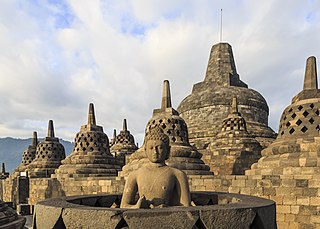 W
WBuddhism in Southeast Asia includes a variety of traditions of Buddhism including two main traditions: Mahāyāna Buddhism and Theravāda Buddhism. Historically, Mahāyāna Buddhism had a prominent position in this region, but in modern times most countries follow the Theravāda tradition. Southeast Asian countries with a Theravāda Buddhist majority are Thailand, Cambodia, Laos and Myanmar, all mainland countries.
 W
WBuddhism in Afghanistan first arrived in present-day Afghanistan through the conquests of the Mauryan King Ashoka, where the remains of an inscription in Kandahar written in 260 BCE were found on the rocky outcrop of Chil Zena. The religion was widespread south of the Hindu Kush mountains.
 W
WIn Australia, Buddhism is a minority religion. According to the 2016 census, 2.4 percent of the total population of Australia identified as Buddhist. It was also the fastest-growing religion by percentage, having increased its number of adherents by 79 percent between the 1996 and 2001 censuses. The highest percentage of Buddhists in Australia is present in Christmas Island, where Buddhists constitute 18.1% of the total population according to the 2016 Census. Buddhism is the third largest religion in the country after Christianity and Islam.
 W
WBuddhists form about 0.9% of the population of Bangladesh. It is said that Buddha once in his life came to this region of East Bengal to spread his teachings and he was successful in converting the local people to Buddhism. About 1.5 million people in Bangladesh adhere to the Theravada school of Buddhism. Over 65% of the Buddhist population is concentrated in the Chittagong Hill Tracts region, where it is the predominant faith of the Rakhine, Chakma, Marma, Tanchangya, other Jumma people and the Barua. The remaining 35% are Bengali Buddhists. Buddhist communities are present in the urban centers of Bangladesh, particularly Chittagong and Dhaka.
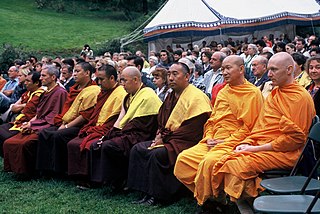 W
WBuddhism is a small religion in Belgium but despite lack of official recognition by the Belgian government has grown rapidly in recent years. As of the 1997 estimate, 29,497 Belgian people identified their religion as Buddhist
 W
WBuddhism is the most widely practiced religion in Bhutan. Vajrayana Buddhism is the state religion of Bhutan, and Buddhists comprise 75% and Hinduism 23% of its population. Although the Buddhism practiced in Bhutan originated in Tibetan Buddhism, it differs significantly in its rituals, liturgy, and monastic organization. The state religion has long been supported financially by the government through annual subsidies to Buddhist monasteries, shrines, monks, and nuns. In the modern era, support of the state religion during the reign of Jigme Dorji Wangchuck includes the manufacture of 10,000 gilded bronze images of the Buddha, publication of elegant calligraphic editions of the 108-volume Kangyur and the 225-volume Tengyur, and the construction of numerous chorten (stupas) throughout the country. Guaranteed representation in the National Assembly and the Royal Advisory Council, Buddhists constitute the majority of society and are assured an influential voice in public policy.
 W
WWith nearly 250,000 Buddhists, Brazil is home to the third-largest Buddhist population in the Americas, after the United States and Canada. Buddhism in Brazil consists of practitioners from various Buddhist traditions and schools. A number of Buddhist organisations and groups are also active in Brazil, with nearly 150 temples spread across the states.
 W
WBuddhism in Cambodia has existed since at least the 5th century. In its earliest form it was a type of Mahāyāna Buddhism. Today, the predominant form of Buddhism in Cambodia is Theravada Buddhism. It is enshrined in the Cambodian constitution as the official religion of the country. Theravada Buddhism has been the Cambodian state religion since the 13th century. As of 2013 it was estimated that 97.9 percent of the population was Buddhist.
 W
WBuddhism is among the smallest minority-religions in Canada, with a very slowly growing population in the country, partly the result of conversion, with only 4.6% of new immigrants identifying themselves as Buddhist. As of 2011, the census recorded 366,830 or 1.1% Canadian Buddhists.
 W
WChinese Buddhism or Han Buddhism is a Chinese form of Mahayana Buddhism which has shaped Chinese culture in a wide variety of areas including art, politics, literature, philosophy, medicine and material culture. Chinese Buddhism is the largest institutionalized religion in Mainland China. Currently, there are an estimated 185 to 250 million Chinese Buddhists in the People's Republic of China It is also a major religion in Taiwan and among the Chinese Diaspora.
 W
WCosta Rica has more Buddhists than the other countries in Central America with almost 100,000, followed closely by Panama, with almost 70,000.
 W
WWith a rough estimate of fifty thousand Buddhists, Buddhism is practiced by around 0.5% of the Czech population. The World Buddhist Directory lists 70 Buddhist places in the Czech Republic.
 W
WBuddhism is the fourth largest religion in France, after Christianity, Islam, and Judaism.
 W
WBuddhism is a major religion in Hong Kong and has been greatly influential in the traditional culture of its populace. Among the most prominent Buddhist temples in the city there are the Chi Lin Nunnery in Diamond Hill, built in the Tang Dynasty's architectural style; the Po Lin Monastery on Lantau Island, famous for the outdoor bronze statue, Tian Tan Buddha, which attracts a large number of visitors during the weekends and holidays.
 W
WBuddhism in Iceland is followed by 0.43% of the population of Iceland, according to the 2021 Census. Buddhism has existed since the 1990s after immigration from countries with Buddhist populations, mainly Thailand. As of 2008, there are three Buddhist organizations in Iceland officially recognized as religious organizations by the Icelandic government. The oldest and largest is the Buddhist Association of Iceland, a Theravada group, which was recognized in 1996 and had 880 members in 2010. Another group, Zen in Iceland – Night Pasture, a Zen group, was recognized in 1999 and had 75 members in 2010. The most recent group is, SGI in Iceland, a Soka Gakkai group, which was recognized in 2008 with 135 members.
 W
WBuddhism is an ancient Indian religion, which arose in and around the ancient Kingdom of Magadha, and is based on the teachings of the Gautama Buddha who was deemed a "Buddha", although Buddhist doctrine holds that there were other Buddhas before him. Buddhism spread outside of Magadha starting in the Buddha's lifetime.
 W
WBuddhism has a long history in Indonesia, and is recognized as one of six official religions in Indonesia, along with Islam, Christianity, Hinduism and Confucianism. According to the 2018 national census roughly 0.8% of the total citizens of Indonesia were Buddhists, and numbered around more than 2 million. Most Buddhists are concentrated in Jakarta, Riau, Riau Islands, Bangka Belitung, North Sumatra, and West Kalimantan. These totals, however, are probably inflated, as practitioners of Taoism and Chinese folk religion, which are not considered official religions of Indonesia, likely declared themselves as Buddhists on the most recent census. Today, the majority of Buddhists in Indonesia are Chinese, however small numbers of native also exist.
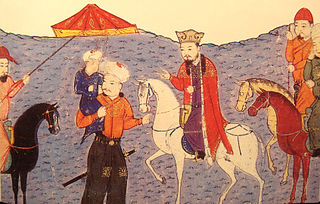 W
WBuddhism in Iran dates back to the 2nd century, when Parthian Buddhist missionaries, such as An Shigao and An Xuan, were active in spreading Buddhism in China. Many of the earliest translators of Buddhist literature into Chinese were from Parthia and other kingdoms linked with present-day Iran.
 W
WBuddhism in Italy is the third most spread religion, next to Christianity and Islam. According to Caritas Italiana, in the country there are 160,000 Buddhists, that is to say the 0.3% of the total population.
 W
WBuddhism has been practiced in Japan since about the sixth century CE. Japanese Buddhism (Nihon Bukkyō) has given birth to numerous new Buddhist schools, many of which trace themselves to Chinese Buddhist traditions. Japanese Buddhism has had a major influence on Japanese society and culture and remains an influential aspect to this day.
 W
WKorean Buddhism is distinguished from other forms of Buddhism by its attempt to resolve what its early practitioners saw as inconsistencies within the Mahayana Buddhist traditions that they received from foreign countries. To address this, they developed a new holistic approach to Buddhism that became a distinct form, an approach characteristic of virtually all major Korean thinkers. The resulting variation is called Tongbulgyo, a form that sought to harmonize previously arising disputes among scholars.
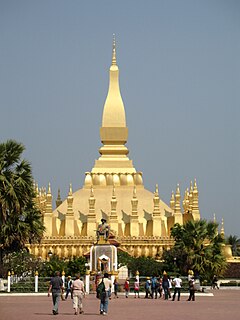 W
WTheravada Buddhism is the largest religion in Laos, which is practiced by 66% of the population. Lao Buddhism is a unique version of Theravada Buddhism and is at the basis of ethnic Lao culture. Buddhism in Laos is often closely tied to animist beliefs and belief in ancestral spirits, particularly in rural areas.
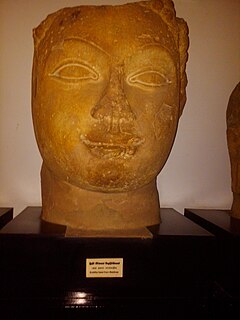 W
WBuddhism was the predominant religion in the Maldives until at least the 12th century CE. It is not clear how and when Buddhism was introduced into the islands.
 W
WBuddhism is the second largest religion in Malaysia, after Islam, with 19.8% of Malaysia's population being Buddhist although some estimates put that figure at 21.6% when combining estimates of numbers of Buddhists with figures for adherents of Chinese religions which incorporate elements of Buddhism. Buddhism in Malaysia is mainly practised by the ethnic Malaysian Chinese, but there are also Malaysian Siamese, Malaysian Sri Lankans and Burmese in Malaysia that practice Buddhism such as Ananda Krishnan and K. Sri Dhammananda and a sizeable population of Malaysian Indians.
 W
WBuddhism is a minority religion in Mexico, numbering 108,701 followers or 0.09% of the total Mexican population.
 W
WBuddhism is the largest religion of Mongolia practiced by 53% of Mongolia's population, according to the 2010 Mongolia census. Buddhism in Mongolia derives much of its recent characteristics from Tibetan Buddhism of the Gelug and Kagyu lineages, but is distinct and presents its own unique characteristics.
 W
WBuddhism is practiced by nearly 90% of the population of Myanmar, and is predominantly of the Theravada tradition. It is the most religious Buddhist country in terms of the proportion of monks in the population and proportion of income spent on religion. Adherents are most likely found among the dominant Bamar people, Shan, Rakhine, Mon, Karen, and Chinese who are well integrated into Burmese society. Monks, collectively known as the sangha (community), are venerated members of Burmese society. Among many ethnic groups in Myanmar, including the Bamar and Shan, Theravada Buddhism is practiced in conjunction with the worship of nats, which are spirits who can intercede in worldly affairs.
 W
WBuddhism is New Zealand's fourth-largest religion after Christianity, Hinduism and Islam, standing at 1.1% of the population of New Zealand. Buddhism originates in Asia and was introduced to New Zealand by immigrants from East Asia.
 W
WBuddhism in Norway has existed since the beginning of the 1970s, after immigration from countries with Buddhist populations, mainly Vietnam. Buddhistforbundet in Norway was established as a religious society in 1979 by two Buddhist groups who wanted to create a common organization to preserve issues of common interest. As of 2013, there are over 30 to 50 thousand registered Buddhists in Norway. Around 5% of them are ethnic Norwegians.
 W
WBuddhism in Pakistan took root some 2,300 years ago under the Mauryan king Ashoka. Buddhism was the religion of predominantly Buddhist empires such as the Indo-Greek Kingdom, the Kushan Empire, and the Maurya Empire of Ashoka which ruled over what is now Pakistan.
 W
WThe roots of Buddhism in Poland can be found in the early 20th century in the nation's connections to the origin countries of the religion, like Vietnam, China, Japan, and Korea. After World War II, primarily expatriate Poles joined various Buddhist groups and organizations. Since the breakdown of the Eastern Bloc, which had promoted an antireligious campaign, Buddhism has been able to develop further in the more tolerant atmosphere.
 W
WHistorically, Buddhism was incorporated into Siberia in the early 17th century. Buddhism is considered to be one of Russia's traditional religions and is legally a part of Russian historical heritage. Besides the historical monastic traditions of Buryatia, Tuva and Kalmykia, the latter being the only Buddhist-majority republic in Europe. The religion of Buddhism is now spreading all over Russia, with many ethnic Russian converts.
 W
WBuddhism in Scotland is a relatively recent phenomenon. In Scotland Buddhists represent 0.24% of the population or around 13,000 people.
 W
WBuddhist traditions are represented in South Africa in many forms. Although the inherently introspective nature of Buddhism does not encourage census, adherents to these traditions are usually outspoken and supported by perhaps an even greater, though hidden number of sympathisers. Temples, centres and groups are common in the metropolitan areas and the country is thought to comprise the largest Buddhist community in Africa.
 W
WTheravada Buddhism is the largest and official religion of Sri Lanka, practiced by 70.2 percent of the population as of 2012.
 W
WBuddhism is a relatively small religion in Sweden. Most of the practicing Buddhists have various Asian heritage. In 2015, the Swedish Buddhist Cooperation Council had 7 901 members.
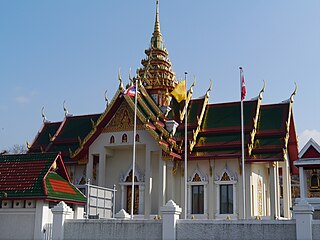 W
WAccording to the 2000 census of Switzerland, 21,305 Swiss residents self-identified as Buddhists. About a third of them were born in Thailand.
 W
WBuddhism is one of the major religions of Taiwan. Taiwanese people predominantly practice Mahayana Buddhism, Confucian principles, local practices and Taoist tradition. Roles for religious specialists from both Buddhist and Taoist traditions exist on special occasions such as for childbirth and funerals. Of these, a smaller number identify more specifically with Chinese Buddhist teachings and institutions, without necessarily eschewing practices from other Asian traditions. Around 35% of the population believes in Buddhism.
 W
WBuddhism in Thailand is largely of the Theravada school, which is followed by 95 percent of the population. Thailand has the second largest Buddhist population in the world, after China, with approximately 64 million Buddhists. Buddhism in Thailand has also become integrated with folk religion as well as Chinese religions from the large Thai Chinese population. Buddhist temples in Thailand are characterized by tall golden stupas, and the Buddhist architecture of Thailand is similar to that in other Southeast Asian countries, particularly Cambodia and Laos, with which Thailand shares cultural and historical heritage.
 W
WBuddhism, once primarily practiced in Asia, is now also practiced in the United States. As Buddhism does not require any formal "conversion", American Buddhists can easily incorporate dharma practice into their normal routines and traditions. The result is that American Buddhists come from every ethnicity, nationality and religious tradition. In 2012, U-T San Diego estimated U.S. practitioners at 1.2 million people, of whom 40% are living in Southern California. In terms of percentage, Hawaii has the most Buddhists at 8% of the population, due to its large Asian American community.
 W
WBuddhism is practiced by about 0.2% of the population of Uzbekistan, according to the US State Department's International Religious Freedom Report 2004. Most are ethnic Koreans. Officially only one Buddhist denomination is registered in Uzbekistan, also there is a Buddhist temple in Tashkent.
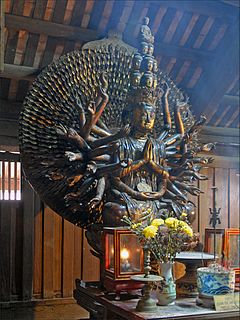 W
WBuddhism in Vietnam, as practiced by the ethnic Vietnamese, is mainly of the Mahayana tradition and is the main religion. Buddhism may have first come to Vietnam as early as the 3rd or 2nd century BCE from the Indian subcontinent or from China in the 1st or 2nd century CE. Vietnamese Buddhism has had a syncretic relationship with certain elements of Taoism, Chinese spirituality, and Vietnamese folk religion.